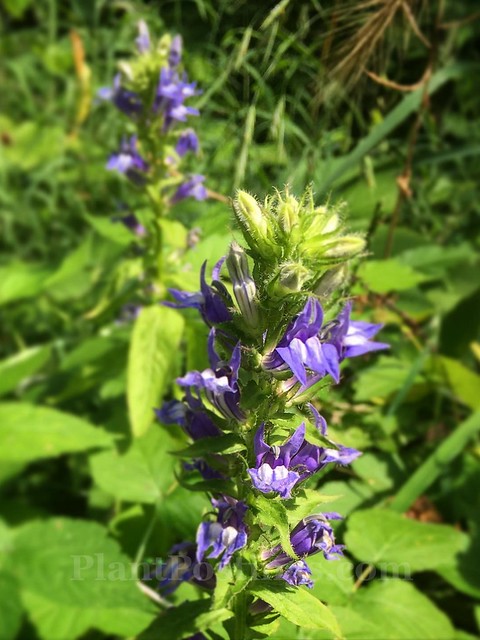In this season of senescence, I've made a decision about one of the garden plots on our property. It's an area where the wild woods meet the cultivated garden beds. It's an island and focal point in the middle of the backyard. It's filled with an evergreen ground cover of Pachysandra (
). It offers dappled sun/shade to plants throughout the day.
And it's infested with rabbits.
I say this because I've spent too much time and money trying to get plants started in this part of the garden. The list of consumed/destroyed plants, gallons of rabbit repellent, and rabbit stories is too long to include here. So, let's just say it's time to surrender.
First of all, I'm not
unhappy with the basic framework of this garden area.

The ferns are lush and lovely in the late spring and early summer.

Especially when joined by the giant Alliums in late May through early July.

In mid-summer, Swamp Milkweed (
Asclepias incarnata) has shown promise here, too, although the past couple of years have been marginal for this plant in this particular spot.

This graceful, towering native plant, Bugbane (
Actaea racemosa), will always have a summer place here. Rabbits don't touch it.
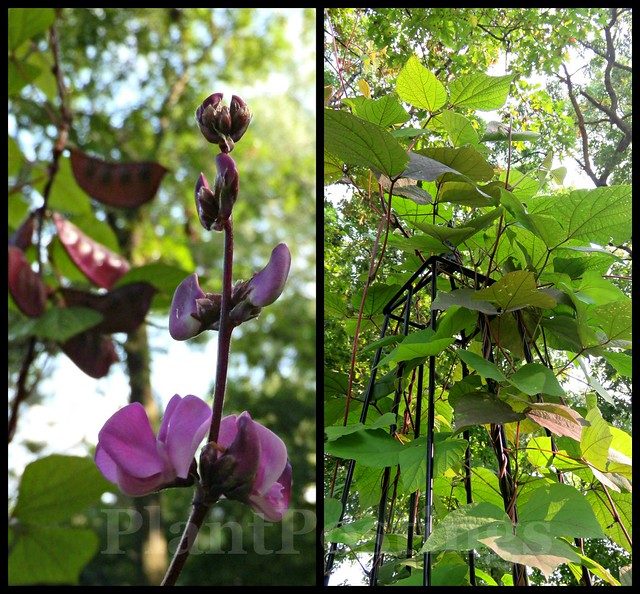
Hyacinth Bean vine (
Lablab purpureus) is happy here, too, growing in a pot protected from rabbits with caging at the bottom, and growing up an obelisk.

Wild Bergamot (
Monarda fistulosa) is a new addition to this part of the garden. It grows fine here, but the rabbits ate most of it. I scattered seeds from the few flowers that survived. Stay tuned.
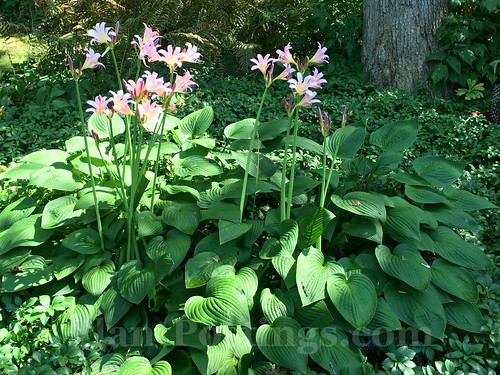
When summer starts to wind down, the Surprise Lilies (
Lycoris squamigera) pop up through skirts of hosta foliage. Rabbits never seem to eat Lycoris.
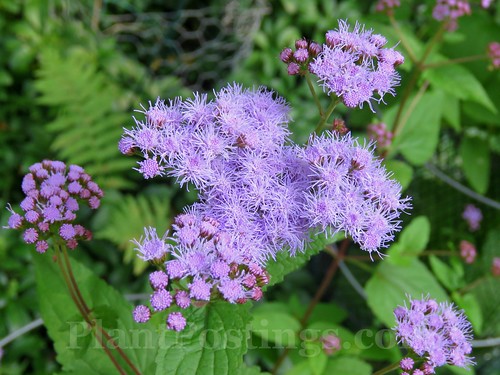
And as summer turns to autumn, Blue Mistflower (
Conoclinium coelestinum) adds pops of violet to the area. Of course, the rabbits eat this plant voraciously, so it, too, must be caged. The fortunate thing about this plant is that it propagates easily from seed.
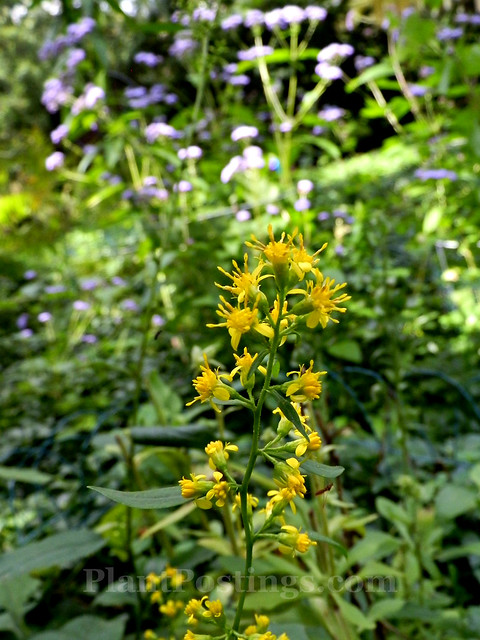
ZigZag Goldenrod (
Solidago flexicaulis), another rabbit favorite, has somehow found a way to survive by a thread.
My point? From now on, I will only plant species in this part of the garden that I know repel rabbits, already exist in my garden and can be transplanted, or can be grown in pots. No more investments in plants. Even the ones that rabbits supposedly don't eat often get munched to the ground. I want more color in the middle of summer, and I'm pleased with a few things that happened this year--things I'll repeat and expand on next year.
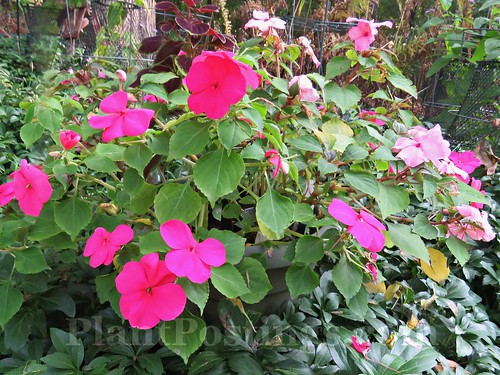
For example, I added two pots of Impatiens and Coleus. You can barely see the green pots amid the Pachysandra. I'm planning to use more pots (and hopefully fewer rabbit-repelling caging devices) in the garden next summer.

A few new decorative items are adding color midseason, too. I really like this new glass birdbath, and I added a solar-powered fountain to it for more visual interest. Next year, the potted annual plant colors will complement it better.
I'm taking a chance with one new plant--several plugs of Golden Groundsel (Packera aurea). Everything I read about this plant says it forms dense colonies and is mammal-resistant. We'll see.
In late fall, I'll also be scattering seeds of several native plants for partial sun or shade--plants that rabbits generally don't eat, including:
Flowering spurge (Euphorbia corollata)
Dutchmen's Breeches (Dicentra cucullaria)
Downy Wood Mint (Blephilia ciliata)
Midland Shooting Star (Dodecatheon meadia)
Great Blue Lobelia (L. siphilitica)
Hoary Skullcap (Scutellaria incana)
Seeds are less expensive than plants and can cover a wider area. The investment in time, effort, and expectations won't be as great.
I've surrendered to seeds.

